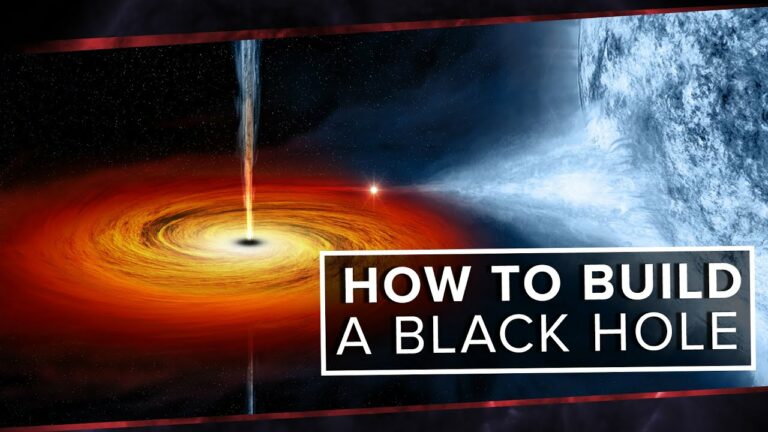How to Build a Black Hole
Black hole, cosmic body of extremely intense gravity from which nothing, not even light, can escape. A black hole can be formed by the death of a massive star.
When such a star has exhausted the internal thermonuclear fuels in its core at the end of its life, the core becomes unstable and gravitationally collapses inward upon itself, and the star’s outer layers are blown away. The crushing weight of constituent matter falling in from all sides compresses the dying star to a point of zero volume and infinite density called the singularity.
Details of the structure of a black hole are calculated from Albert Einstein’s general theory of relativity. The singularity constitutes the centre of a black hole and is hidden by the object’s “surface,” the event horizon. Inside the event horizon the escape velocity (i.e., the velocity required for matter to escape from the gravitational field of a cosmic object) exceeds the speed of light, so that not even rays of light can escape into space.
The radius of the event horizon is called the Schwarzschild radius, after the German astronomer Karl Schwarzschild, who in 1916 predicted the existence of collapsed stellar bodies that emit no radiation. The size of the Schwarzschild radius is proportional to the mass of the collapsing star. For a black hole with a mass 10 times as great as that of the Sun, the radius would be 30 km (18.6 miles).
Black holes have mystified physicists for decades, but with the help of quantum mechanics, we are beginning to make serious progress in understanding these strange objects.
This week on Space Time, Matt dives deeper into the physical process of creating a black hole, and what that can tell us about how black holes behave.
Do not forget to share your opinion with us to provide you with the best posts !




0 Comments